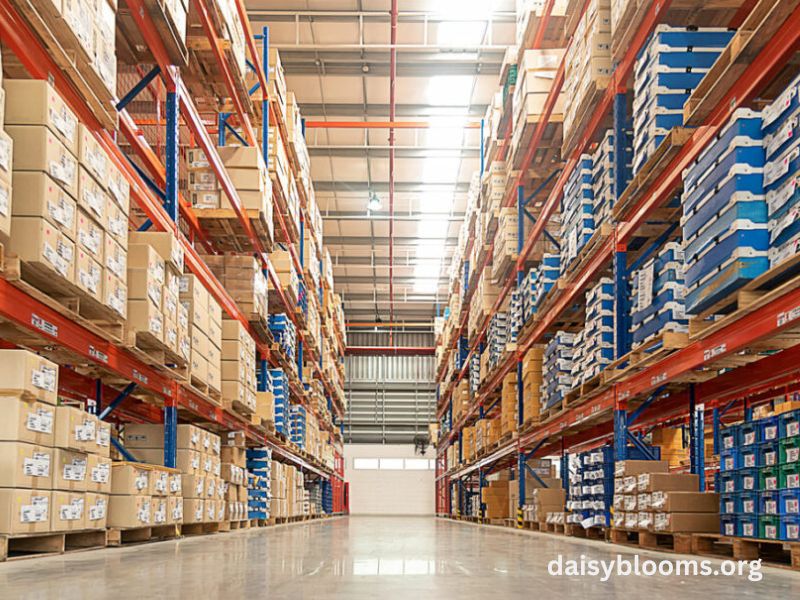In the fast-paced world of retail, warehousing, and supply chain management, efficiency is paramount. A well-organized stockroom area is key to smooth operations, reducing costs, increasing productivity, and ensuring that businesses can meet customer demands. “Fotos de área de estoque antes e depois” (before and after photos of stockroom areas) provide a compelling visual representation of how proper organization, technology integration, and systematic workflows can transform chaotic stockrooms into streamlined, functional spaces.
In this article, we will explore the importance of stockroom organization, discuss key strategies for improvement, and showcase the significant changes that businesses can experience when they prioritize optimizing their storage areas. The goal is to demonstrate the impact of organization through “before and after” examples, emphasizing how transformation can lead to operational success.
The Importance of an Organized Stockroom
An organized stockroom is not just about visual appeal but about enhancing the overall workflow of a business. Cluttered and disorganized stockrooms can cause several problems, including misplaced inventory, time wastage, and reduced productivity. These issues lead to financial losses, unhappy customers, and frustrated employees.
Some key benefits of maintaining an organized stockroom area include:
- Improved Inventory Management: When stock is properly arranged and categorized, it becomes easier to monitor inventory levels, ensuring items are restocked before they run out. An organized stockroom reduces the chances of overstocking or understocking.
- Enhanced Productivity: Employees spend less time searching for products, allowing them to focus on other important tasks. This efficiency directly translates into better productivity.
- Safety: An organized stockroom is a safer environment. Uncluttered aisles, properly stored materials, and clearly marked areas reduce the risk of accidents.
- Cost Savings: Efficient inventory management reduces the risk of damaged goods, over-purchasing, and mismanagement of stock. These all contribute to cost savings over time.
- Faster Order Fulfillment: In e-commerce and retail, speed is crucial. Organized stockrooms facilitate quicker and more accurate order picking, leading to faster order fulfillment and improved customer satisfaction.
Identifying Stockroom Challenges: The “Before” Stage
The “before” stage in stockroom organization often highlights some common issues businesses face. Whether it’s due to rapid growth, a lack of management focus, or poor space utilization, these problems can spiral out of control quickly. Let’s look at some of the major issues commonly found in disorganized stockroom areas:
- Clutter and Chaos: Overcrowded shelves, unsorted products, and boxes stacked in random places often define poorly organized stockrooms. This clutter not only makes it hard to locate items but can also cause damage to products.
- Lack of Proper Labeling: Without proper labeling systems, it becomes challenging for employees to identify where specific items are stored. This increases the time spent locating inventory, leading to inefficiencies in restocking and order picking.
- Inadequate Space Utilization: Often, stockroom areas are not optimized for the best use of available space. This can result in overcrowded aisles or underutilized vertical space.
- Inventory Mismanagement: In many cases, businesses struggle with keeping track of what’s in stock, leading to overstocking, stockouts, or expired products being kept on the shelves.
- Safety Hazards: Disorganized stockrooms can pose significant safety risks. Boxes and pallets not properly stored may lead to accidents, while narrow or blocked aisles can prevent quick and safe movement.
Implementing Solutions: The “After” Stage
The “after” transformation in a stockroom often begins with a thorough evaluation of the current problems and the creation of a strategy for improvement. Below are some strategies that can completely transform a stockroom area from disorganized to highly efficient.
1. Decluttering and Cleaning
The first step in any stockroom transformation is to declutter. This involves removing any unnecessary items, disposing of damaged or outdated inventory, and ensuring that the remaining stock is clean and ready for storage. This process helps to create a clean slate for the new organizational system.
2. Introducing a Proper Shelving System
Efficient shelving is critical to making the best use of stockroom space. Shelving should be designed to maximize the vertical space in the room while also allowing for easy access to items. Implementing adjustable shelving systems allows businesses to modify the layout as inventory needs change, optimizing storage space.
3. Implementing Labeling and Signage
Proper labeling and signage are essential for stockroom organization. Each shelf, bin, or section should be clearly labeled so employees can easily find what they are looking for. Barcoding systems can also be implemented to track inventory efficiently and minimize human error during order picking or restocking.
4. Using Inventory Management Software
One of the most effective ways to manage a stockroom is to use inventory management software. This technology helps businesses keep accurate records of their inventory, track orders, and even predict future stock needs based on sales patterns. Inventory management software streamlines processes and helps prevent overstocking or running out of popular products.
5. Reorganizing the Layout
The layout of a stockroom plays a significant role in improving efficiency. Items should be stored in a way that makes sense for the flow of operations. For example, high-demand products should be located near the front for quick access, while less frequently used items can be placed toward the back.
Creating a well-defined traffic flow within the stockroom also reduces congestion and helps employees move quickly and safely. Additionally, creating dedicated zones for specific product categories ensures that stock is organized logically.
6. Regular Stock Audits
Once a stockroom has been organized, it’s essential to maintain that organization. Conducting regular stock audits ensures that items are where they are supposed to be and that the stock levels match what’s in the system. Regular audits help businesses stay on top of any discrepancies in inventory management.
7. Training Employees on Stockroom Protocols
Even the best organizational system will fail if employees are not trained properly. It’s important to educate staff on stockroom protocols, including how to properly store and label items, how to use inventory management software, and the correct procedures for picking and restocking products. Clear communication ensures that everyone is on the same page and the stockroom remains organized.
The Visual Impact: Before and After Stockroom Transformations
The difference between “before” and “after” in a stockroom transformation is often dramatic. The before photos may show piles of unsorted boxes, narrow and cluttered aisles, and a general sense of chaos. After the implementation of organizational systems, the stockroom is transformed into a clean, efficient, and well-organized space.
- Before: Disorganized, messy, hard-to-navigate aisles.
- After: Neat, labeled shelves with clear signage, open aisles for easy access.
- Before: Boxes stacked in random areas, wasting space.
- After: Shelving systems that make full use of vertical space, with everything neatly arranged.
- Before: Lack of inventory control leading to overstock or stockouts.
- After: Real-time inventory tracking ensures stock levels are accurate, reducing financial losses.
Conclusion: The Benefits of a Well-Organized Stockroom
The transformation from a cluttered, inefficient stockroom to a streamlined, organized space has significant positive impacts on a business. Not only does it improve operational efficiency and inventory management, but it also boosts employee morale and customer satisfaction.
By implementing proper shelving systems, labeling, inventory management software, and employee training, businesses can turn their stockrooms into well-oiled machines that contribute to overall success. The photos of “before and after” stockroom transformations provide a clear visual representation of how much can be achieved with proper organization.
In the end, investing in a well-organized stockroom is a smart business decision, and the changes will pay off in terms of productivity, safety, and profitability.


